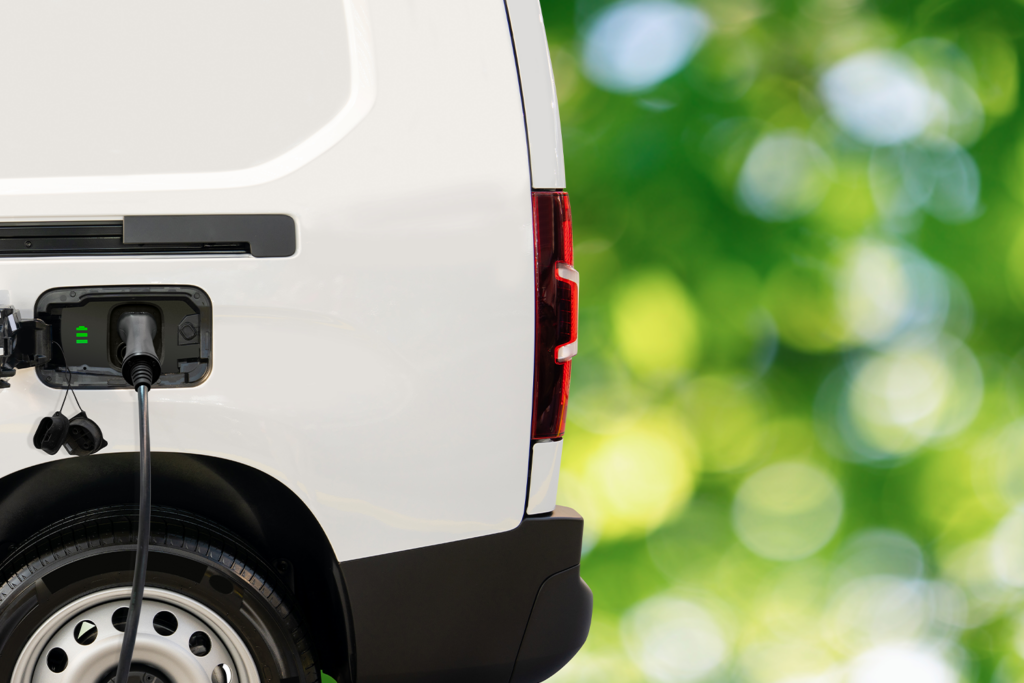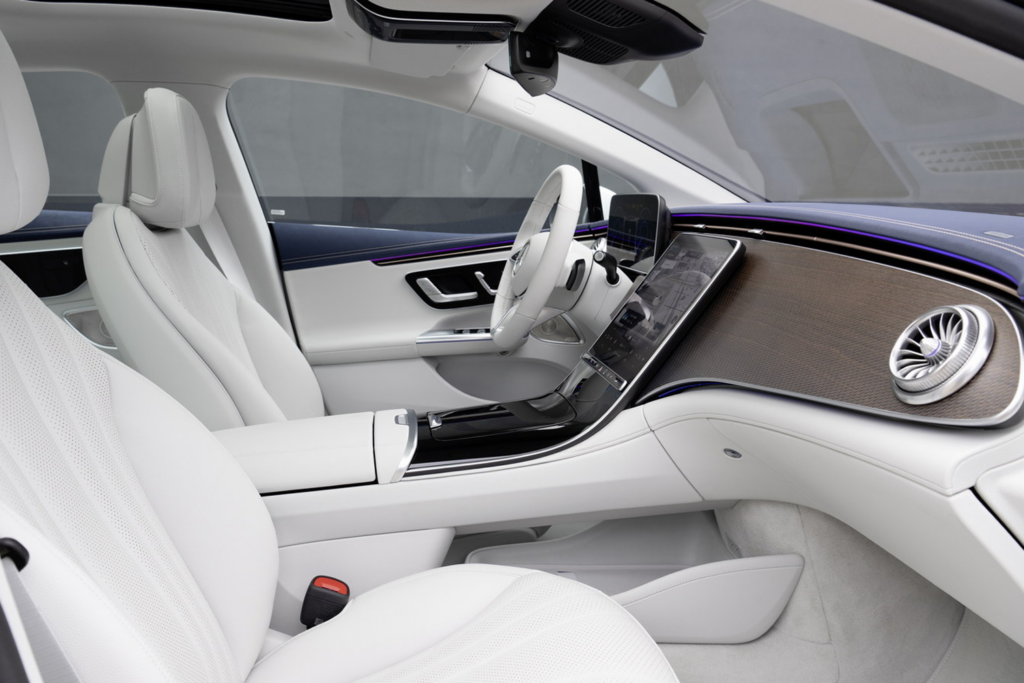S h a r e
Give your fleet drivers the latest technology


Posted by
Andy Bruce
November 2022
The difficulty in accessing new vehicles over the last couple of years has meant many fleets have needed to extend their current vehicles beyond planned running parameters.
Ordering new vehicles remains complex and frustrating with often long delays running out to 12 months before the expected delivery date.
But recently we have started to see the first signs that some vehicles are becoming more readily available as retail demand begins to soften and car manufacturers pivot to the fleet sector once more.
So now is the opportunity to start renewing your fleet and to take advantage of the latest technology to power cars as the automotive world and the tech industry increasingly merge.
It will also ensure that your drivers are in the most up-to-date vehicles, which will maximise the efficiency of your fleet and assist your Environmental, Social and Governance programme, and keep them in the safest models on the road as part of your company’s duty of care to its drivers.
Increasing fleet efficiency
Fuel costs are rising and added focus is being placed on vehicle efficiency. By driving the latest petrol or diesel vehicles, chances are they are partially electrified. Mild hybrids are replacing many “standard” petrol or diesel engines, with hybrids, plug-in hybrids, and pure-electric models often launched in the same range.
By reducing the amount of work an engine has to do thanks to support from an electric motor – or by simply removing the engine altogether and going fully electric – significant fuel savings are available.
We would encourage fleets where possible to consider full electrification. The savings compared with traditional diesel or petrol models are significant on a whole life cost basis. In addition the driver will have a significant reduction in benefit in kind taxation thanks to the benign taxation status of electric cars.

Putting fleet safety first
We are still many years away from fully self-driving cars on the road, but the technology for a vehicle to drive itself is present on many new models. Cameras and radar sensors can combine with well-established systems such as cruise control to allow a car to assist its driver – particularly useful in heavy traffic or on longer business trips.
Current Advanced Driver Assistance Systems (ADAS) regulations allow a car to hold its lane, slow down, and accelerate up to a set speed – all with the driver in full control – dramatically reducing the strain on the driver at the wheel.
Cameras and sensors can also “see” further up the road, and warn or even apply the brakes to try and prevent an incident if it senses a stationary vehicle or hazard in the lane ahead.
Many vehicles now have some form of driver drowsiness alert system, ranging from the simple ‘time for a break’ alert on the dashboard to more sophisticated systems that detect driver eye movement, steering inputs and calculate if a driver is beginning to lose concentration. Given that up to 20% of accidents on the UK’s roads are the result of driver fatigue, new technology will certainly help you run a safer fleet.
And there’s no need to be wary that the latest electric cars don’t offer the same safety protection in an accident. Whether it’s a traditional premium maker such as Mercedes-Benz, or a Chinese newcomer to Europe such as BYD, both cars in recent tests – the Mercedes EQE saloon and electric BYD Atto 3 SUV – scored a maximum five points in the latest Euro NCAP crash tests.

Connected tech
Many new vehicles are able to be accessed using a native app, allowing drivers to check on statuses and control various systems from their smartphone.
This will typically feature the ability to set air-conditioning temperatures remotely, and get the vehicle’s interior to the correct temperature before they even get in the vehicle. This is particularly useful for fleet drivers in electric vehicles, where the EV can be preconditioned while it’s still attached to the charger. On frosty days or extremely hot days, this feature can make driving more comfortable and safer.
There are other features available with plug-in vehicles, such as setting recharging times to take advantage of lower cost off-peak electricity or checking on battery levels, all are making life more convenient for the driver.
Reducing downtime
A huge benefit for fleet operators running vehicles with the latest tech is that many new vehicles can diagnose issues, book in routine servicing, and allow workshops to order parts before the vehicle is on the ramp thanks to the car’s internal monitoring system.
These servicing-focused features mean that more is known about the vehicle’s general state of repair ahead of time, saving the number of hours or days that it may be off the road with more efficient time management.
In-car entertainment
Long gone are the days of having to settle for one single, crackly radio station, or relying on the case of CDs in the glovebox. Now, most drivers are familiar with being able to connect their phone via Bluetooth to their car’s infotainment system.
The latest models not only offer increased connectivity through the likes of Apple CarPlay, and Android Auto – giving the ability to use a driver’s own apps and settings easily through the car, including the likes of up-to-date mapping through Google or Apple Maps. Newer systems allow for in-built apps as well, adding options like Spotify or Google Maps directly to the car’s system.
Over-the-air updates – just as you would get for your smartphone or laptop – mean that a car’s infotainment system is never out of date. This is carried out either by using the wifi at the driver’s home, or the in-built SIM cards, with some cars coming with two dedicated SIMs to deal with this set-up.
Technology – making fleets better
Whether it’s the latest in electrification, or new safety features, the technology in the latest cars coming to market will make your fleet more efficient and safer. Delaying new vehicle ordering – however difficult it may be at the moment – means older and more dated vehicles on your fleet. Why not give your drivers the newest technology and the most tax efficient cars on the road?
You also might like…
If you liked this article then check out our posts about similar topics
First Drive: Why Audi’s Q4 e-Tron matters
The Company Car Sweet Spot for future-proofing your Fleet An Audi badge says professional without drifting into show-of...
First Drive: Jaecoo 7 – Range-Rover Looks on a £30k Budget
Why this newcomer matters China’s Chery Group is taking the UK by storm with a two-brand strategy: Omoda targets mains...
Good-enough lease rates aren’t good enough anymore: Introducing Multi-Bid Tendering
In a climate of persistent inflation, unpredictable tariffs and relentless cost pressure, “we’ve always done it this...
Become a Fleet Alliance business partner
I am writing to you about the opportunity to become a business partner of Fleet Alliance The commercial arrangement a...
Charting a Greener Course: Chris Rowthorn signs the Business Wales Green Growth Pledge
When seasoned automotive finance professional Chris Rowthorn left MotoNovo after more than two decades to become a Flee...
Outsourcing Your Fleet: 10 Reasons Fleet Alliance Makes Perfect Sense for Busy Fleet Managers
Running a large corporate fleet means you’re under constant pressure to hit cost, compliance, and sustainability targe...
What makes Fleet Alliance a winner in the SME fleet sector?
We all like an award, an additional trophy for the cabinet - the recognition is important and it’s always good to rece...
10 great cars to have on salary sacrifice 2025
Employers and employees are really catching on to salary sacrifice because you can drive a brand new electric car (EV) a...
Ready to make the management of your fleet more efficient?
Request a call back
